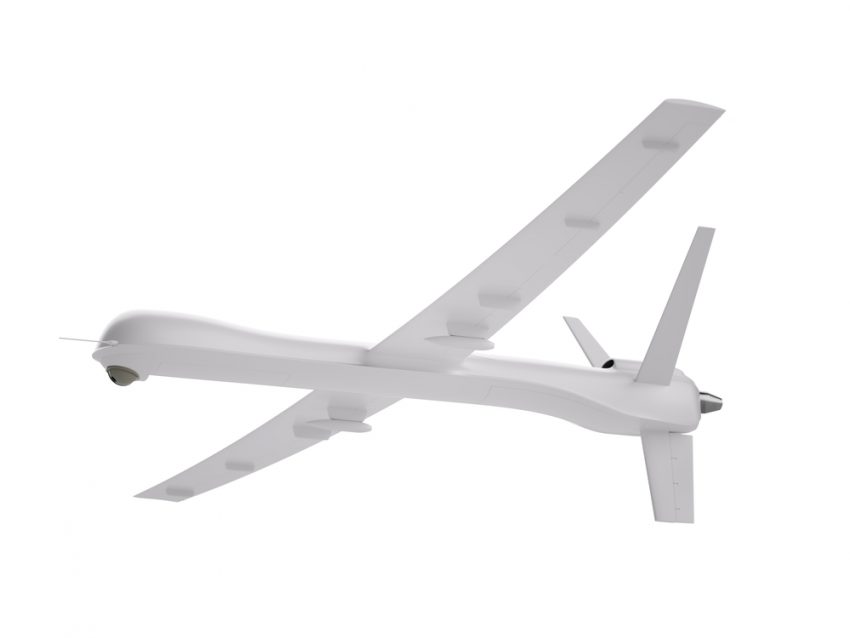Aircraft loads are the forces and moments applied to the airplane structural components to establish the required strength level of the complete airplane. These loadings may be caused by air pressure, inertia forces or ground reactions during take offs and landings. Determining design loads involves a full aircraft analysis of the air pressure and inertia …
Simulating Reality, Delivering Certainty
Manufacturing Simulation Reduces Development Costs and Time in Cold Forming Tool Design
Omni-Lite Industries is an advanced material company. They recently designed a new part that was exhibiting a unique material flow. The part was cold formed out of 1100 aluminum material.
The initial tool design was completed and reviewed using the Simufact.forming simulation. Upon initial review, everything seemed to be acceptable, with the exception of the volume of material in the flange of the part. The second station trap extrusion die radius was then reduced in order to accommodate the material volume requirements.
Rigorous, Transient 3D CFD Models of Unusually Complicated Fluid Networks/Circuits
The role of fluid dynamics simulation in the design and development of various products has recently undergone what is arguably a paradigm shift due to the ability to simulate unusually complicated, multi-component, hydraulics flow circuits using three dimensional (3D) computational fluid dynamics (CFD) models. The example shows a lubrication system model (developed using the Simerics-Sys / PumpLinx CFD software) for a 16 cylinder reciprocating internal combustion engine. This represents an advance in system-level modeling of hydraulic fluid networks over the current state of the art which is a blend of zero and one-dimensional models. This also represents continued progress in the role of CFD from the traditional component level modeling to system level modeling. System level modeling provides insight into interactions between components. Finally, it is equally important that model setup and run times are reasonable relative to development time scales.
Impact on a Stiffener for Lower B-Pillar
L&L Products is a provider of individual and innovative engineering solutions to the automotive industry and is known for superior engineering through the use of state-of-the-art simulation methods in the product development chain. However, they faced the challenges in moving towards greener technology by replacing classical metal design with composite structures. The purpose of transitioning was to utilize the outstanding performance of composite materials. However, this presented difficulties, mainly with predicting the injection molding process and achieving a high-quality prediction of the impact on a short fiber reinforced stiffener beam.
Use of FEA in Elevator Design and Test
Schindler Elevator’s offerings range from passenger elevators suitable for small blocks of apartments to sophisticated transport solutions for skyscrapers. Service elevators ensure the stress-free movement of goods and people in shopping centers, office buildings and railway stations. Bed elevators provide for the smooth and vibration-free movement of patients and equipment in hospitals. In industrial buildings, many of the hoists and small good elevators in use are supplied by Schindler, while glass cabin elevators in tall buildings offer both a novel experience and a feeling of safety. It is hard to imagine public transport without elevators, which are often heavily used and must therefore meet demanding requirements in availability and serviceability.
The company’s research and development facility in Switzerland devises complete elevator systems as well as components for all applications. Here, CAE is used to find reliable and energy-efficient solutions which make the most efficient use of materials. The programs SimXpert and MSC Nastran from MSC Software are used for structural calculations using the finite element method (FE). These are used, for example, to simulate the wall fixings of elevators and determine whether deformations and loadings remain within the permissible range. The resulting design and its verification encompass the guiding system and the cabin, counterweight and drive components. In addition to static (strength) calculations, dynamic and vibration analyses are also carried out with the aid of FE methods. The field of nonlinear FE calculations is also of central significance.
Finite Element Analysis of a UAV Wing
AeroVironment’s Global Observer is an unmanned aircraft with the wingspan of a Boeing 767 but less than 10% of the weight designed to provide communications and sensing for flights lasting up to one week at up to 65,000 feet. With a maximum wing loading of only 3.5 pounds per square feet, the wingtip deflects greater than 22 feet at its design limit load.
MSC Nastran was utilized to develop nonlinear stress, structural dynamic and aeroelastic finite element models. The structural dynamics model was correlated to a ground vibration test, both of which had to accommodate the apparent mass of the air, which is atypical. The ultimate test of the nonlinear stress model was correlation with the static wing load test.






